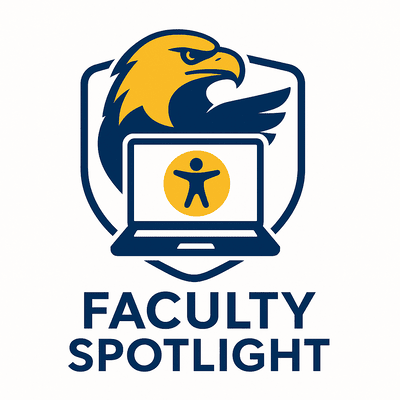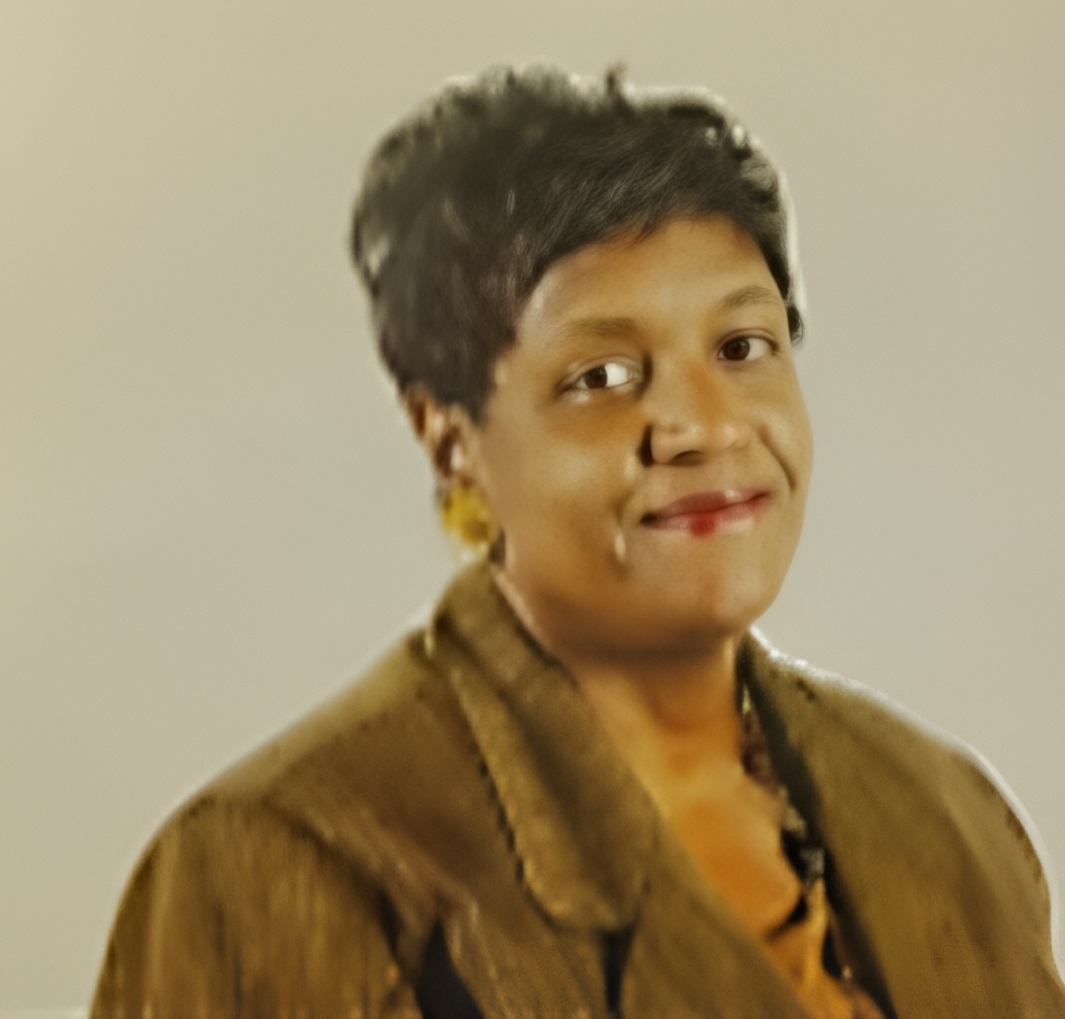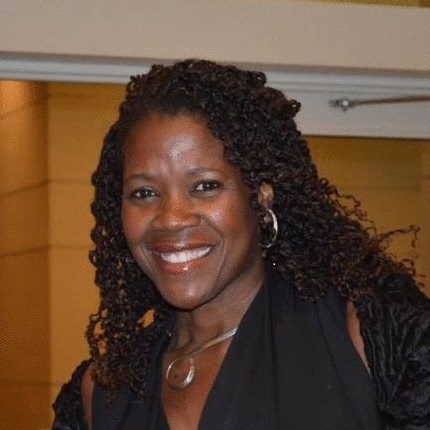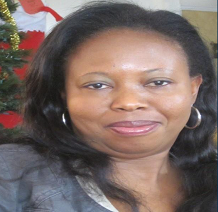Digital Accessibility Faculty Showcase and Recognition
Digital Accessibility
See How Your Colleagues Are Leading the Way in Accessible Course Design
Our Faculty Spotlight series celebrates instructors who are making a measurable impact on digital accessibility at Coppin. Here, you’ll find inspiring stories, practical tips, and candid reflections from faculty who are integrating accessibility into their teaching practices.
Each spotlight offers a window into your colleagues’ approaches, tools, and lessons learned. These features are designed not only to recognize their efforts, but also to spark ideas and encourage shared learning across our campus community.

October Faculty Spotlight on Digital Accessibility
We are proud to feature Dr. Glynis M. Barber and Prof. Sherida Morrison Santiago this month. Both faculty members completed the Digital Accessibility Self-Paced course offered by our Innovation, Development, Education and Assessment(I.D.E.A) team and earned 12 professional development hours. Their commitment to accessible teaching practices highlights the importance of ensuring all students can fully participate in their learning experiences.
Dr. Barber is a tenured professor in the College of Arts, Sciences, and Education, Department of Teaching and Learning, at Coppin State University in Baltimore, Maryland. Over her career, Dr. Barber has served in multiple leadership roles at Coppin and beyond, bringing a strong voice to issues of equity and excellence in education.
In addition to her work on campus, Dr. Barber contributes to the broader education community as a former member of the Mayor’s Office of Children & Family Success—Baltimore Children’s Cabinet Literacy Workgroup—and as a current member of the International Literacy Association’s Administrator Task Force. She is also serving her second term as a National Recognition Program Reviewer for the International Literacy Association (ILA). Her research interests include equity in education, quality management, the school-to-prison pipeline, and scientifically based reading instruction (SBRR).
Prof. Sherida Morrison Santiago, is a dedicated business professor in Coppin State University’s College of Business, where she blends scholarship, leadership, and community engagement to empower the next generation of inclusive and values-driven leaders. With over two decades of experience across the nonprofit, public, and private sectors, she brings both depth and authenticity to her teaching and mentoring.
Professor Santiago’s commitment to accessibility stems from both professional and personal understanding. Before taking Coppin’s self-paced accessibility course, she shared that her awareness came primarily from supporting students who disclosed accommodation needs and from experiences with family and friends who also required accessibility support. Completing the training, she reflected, expanded her perspective and deepened her understanding of what true inclusion looks like in practice.
Through her continued work in leadership, teaching, and organizational development, Professor Santiago exemplifies how accessibility and empathy strengthen learning environments and transform institutions for the better.
Below, Dr. Barber and Prof. Morrison share reflections on their digital accessibility journeys:
Dr. Barber – Progress over Perfection
Prof. Morrison – Enlightenment is Part of the Journey
Featured Accessibility Champion: Dr. Glynis Barber
Dr. Glynis M. Barber, a tenured professor in the College of Arts, Sciences, and Education, Department of Teaching and Learning, at Coppin State University.

“Closing the accessibility gap by moving from exclusion to inclusion captures the essence of my journey."
Before the self-paced course, how would you describe your awareness or comfort level with accessibility?
Prior to enrolling in the self-paced course, I had a fundamental understanding of the policies and procedures that govern accessibility. The self-paced course heightened my awareness of the importance of building trust with students. I realized the importance of fostering open communication to better understand students’ accessibility and academic needs. This insight has reshaped how I approach student support, emphasizing empathy and collaboration.
Was there a “lightbulb moment” in your teaching career when accessibility became personal rather than just abstract?
My "lightbulb moment” toward inclusive teaching began with an incident that I will never forget. A few years ago, during the first meeting of a literacy course, a second-year student approached me and expressed her frustration because her needs had not been met. I was dismayed because I was not aware of her situation, but I assured her that I would do whatever was necessary to modify the materials so that she could fully participate. A few days later, I received an official notification outlining her specific areas of need. I worked diligently throughout the semester to ensure that the student was able to access the course content with ease. She became one of the top performing students in the course. That experience was the turning point for me -it sparked my commitment to getting a better understanding of the policies and procedures that govern accessibility, and it was also the driving force behind my quest to pursue training opportunities offered by the Department of Information Technology.
What does “progress over perfection” mean to you in your own accessibility journey?
The “progress over perfection” theme resonates deeply with me because it directly aligns with the Universal Design for Learning (UDL) framework, which promotes fair and equitable access for all learners. It reminds me that the theme does not involve making monumental accessibility changes in my courses overnight. Instead, I will focus on implementing meaningful, incremental changes that minimize roadblocks and empower diverse learners to engage with course content more effectively.
If you had to describe your accessibility journey in one word or phrase, what would it be—and why?
Closing the accessibility gap by moving from “exclusion to inclusion” captures the essence of my journey. Prior to participating in accessibility trainings, I did not realize that my instructional practices may have unintentionally excluded students. The self-paced course deepened my awareness of the human side of accessibility-particularly the importance of building trust with students. The accessibility training taught me how to view course design through an accessibility lens-one that prioritizes equity, empathy, and inclusion.
What inspired you to take the self-paced accessibility course, and what did you hope to get out of it?
I was inspired to take the self-paced accessibility course to learn best practices to implement in my courses so that all learners regardless of their challenges can reach their highest potential. By interacting with students who experienced challenges due to limited content variation, I recognized the need to rethink my instructional approach. The course provided practical tools and strategies that empowered me to design more inclusive and engaging learning experiences. The self-paced course reaffirmed the importance of creating an environment where students feel supported, valued, and equipped to succeed.
Which part of the course—or the extra activities—was most useful or eye-opening for your teaching?
The most useful aspect of the self-paced course was the comprehensive overview of accessibility policies and procedures. This information helped me to recognize the urgency of designing courses with accessibility at the core. The module quizzes were extremely useful because I was able to check for gaps in my understanding and track my progress throughout the course. The most important module was the presentation about accessibility tools that are appropriate for various disabilities, paired with student testimonies that added authentic context to the material. Throughout the course, feedback from Professor Velez-Torres provided encouragement and clarity giving me the push that I needed to complete the journey.
Since completing the course, how much have you been able to apply what you learned in your own classes? (If yes: what stuck? If not: what got in the way?)
Since the completion of the self-paced course, I have been gradually modifying courses to reflect best practice shared throughout the training. I am actively using Anthology Ally in Blackboard Ultra to monitor the scores for documents and presentations, ensuring that all course content meets accessibility standards. To continue this improvement effort, I am reviewing and modifying course syllabi by checking the accessibility scores and implementing the recommended changes. Additionally, I am encouraging students to use the built-in accessibility features such as screen readers, and the alternative format tool to ensure that materials are adaptable to their individual needs.
Can you share a specific example of how you’ve made your course more accessible?
One specific example of how my face-to-face course is more accessible is the integration of the text-to-speech feature in my PowerPoint presentations. Since I am still in the initial stages of learning how to use this feature, there have been glitches along the way, but I remain committed to mastering the tool to better support diverse learning needs. In addition, I implemented captions in videos and used formatting tools to adjust headings in core documents, ensuring compatibility with screen readers and improving navigation for all learners. This semester, I changed quizzes to an online format in my courses. This change provides greater flexibility to better accommodate those who may need extended time. This change is also beneficial for students who may experience anxiety in traditional testing settings. By incorporating these accessibility features, I plan to reduce undue stress and foster a supportive learning environment for all students.
How have students responded to the accessibility changes you’ve made?
Students are responding favorably to the incremental accessibility changes that I have implemented in my courses. The implementation of accessibility tools has significantly enhanced students’ self-efficacy in my courses. Students who were reluctant to participate are now active participants in the course.
Have you noticed any shifts in student confidence, engagement, or persistence as a result?
I have witnessed a shift in student engagement since implementing inclusive practices. Students who have not formally presented accommodation notifications are voluntarily sharing their preferred accessibility tools in class. This openness fosters a collaborative learning culture where accessibility becomes a shared value. Even more encouraging, students who were reluctant to participate due to accessibility concerns are now more inclined to serve as team leaders during cooperative group activities. These moments are examples of factors that contribute to student persistence and program continuation.
"Students who were once reluctant to participate are now active leaders in class—accessibility has transformed not only their engagement, but their confidence."
What’s something your students have taught you about accessibility that you didn’t expect?
My students taught me that accessibility must become a priority for Eagle Nation. As facilitators of learning we must be prepared to answer the call to ensure that programs and services adhere to national accessibility mandates and reflect our unwavering commitment to the diverse needs of students. This work should not fall on a single individual or a department. It will take a “village approach” where administrators, faculty and staff collaborate to remove barriers and create pathways for success. Every student deserves an opportunity to matriculate through their program of study free from obstacles that may impede their progress.
What would you say to a colleague who’s interested in the course but nervous about getting it “perfect”?
I would advise my colleagues who are nervous about getting “it perfect” to strongly consider taking the self-paced course. Participation in the course directly supports CSU’s Priority 2, which emphasizes the importance of promoting student well-being and completion rates. The goal of the self-paced course is not perfection-it’s progress. The journey is about acquiring practical tools and strategies to ensure course content is accessible. Most importantly, learners receive continuous support throughout the course, making it a welcoming and empowering experience for educators at any stage of their accessibility journey.
What role do you think faculty play in creating a culture of accessibility on campus?
Faculty are the first line of defense in the accessibility movement. One of our most important responsibilities is shaping the learning experience, and our choices directly impact whether students feel included or excluded. When we embrace inclusive best practices, we champion equity, empathy, and academic excellence. Every decision we make regarding course design has the potential to remove barriers or reinforce them. When we lead with intention and compassion, we create learning experiences where all students can thrive. Accessibility begins with us, and it has the power to transform our academic environment and the broader educational landscape.
"When we embrace inclusive best practices, we champion equity, empathy, and academic excellence."
What’s one accessibility habit or goal you’re focusing on this semester?
This semester, I am committed to creating an inclusive learning environment where every student can thrive. My goals include:
Enhancing my proficiency of real-time captioning in PowerPoint presentations to better support students with auditory processing needs.
Continuing to use Ally to ensure that PDF files are accessible and compatible with assistive technologies.
Expanding the use of innovative accessibility tools in my courses to foster equitable engagement and remove barriers to learning.
These goals reflect my dedication to inclusive teaching and my belief that accessibility is a cornerstone of student success.
If you could make one big change at Coppin—or in higher education broadly—to advance accessibility, what would it be?
To foster a more inclusive and equitable campus community, I would recommend that the administration consider implementing a policy requiring all stakeholders including administrators, faculty, staff, and student leaders to attend accessibility trainings at least twice a year. These sessions will ensure that everyone is well-informed about the policies, procedures, and best instructional practices that govern accessibility across campus environments. The administration should also consider implementing a campus-wide Accessibility Committee.
Featured Accessibility Champion: Professor Sherida Morrison Santiago
Sherida Morrison Santiago is a dedicated business professor in Coppin State University’s College.
Accessibility isn’t ‘extra time.’ It’s part of someone’s life that helps them work and perform just as efficiently as everyone else.
Faculty Accessibility Champions: Inaugural Spotlight Series
Featured Accessibility Champion: Dr. Rhoden-Trader
Dr. Rhoden-Trader is a Professor of Criminal Justice in the College of Behavioral and Social Sciences’ Criminal Justice department at Coppin State University.

"I pride myself on ensuring that I provide my scholars with optimum learning opportunities… that was the impetus for me really delving in.”
What inspired you to begin incorporating digital accessibility into your teaching practices?
About two years ago, during a college meeting, faculty were divided into three groups based on accessibility performance. I landed in the “middle-tier” group—not failing, but not meeting the university’s expectations. I didn’t like being there. I take pride in adhering to policies and making sure my students have the best possible learning opportunities. That moment was my turning point. I began revising my course materials immediately to improve my accessibility scores.
Was there a particular moment or student interaction that made accessibility feel urgent or personal to you?
Around the same time, I had a student in my research methodology course who was visually impaired and needed a document reader. While the student hadn’t followed all required steps for accommodations, our conversation—along with input from the accessibility office—opened my eyes to why headings, proper reading order, and accessible formatting are so important.
It became something real for me… to ensure that there is equal access to everybody who desires to learn. If equipped with the right tools, they should have access."
It also made me think about students with dyslexia or other learning disabilities. Accessibility wasn’t just a policy—it was about real people with real needs.
How has your understanding of accessibility evolved over time?
I’ve grown from simply “following the rules” to becoming an advocate and steward. Accessibility is part of diversity, equity, and inclusion—it’s about ensuring access in all aspects of learning. This perspective has been shaped by my students, my teaching experiences, and even my daughter’s work with students who have learning disabilities.
Can you share a specific example of how you’ve made your course more accessible?
I’ve updated all my course materials—especially my PowerPoints—using accessibility tools like Anthology Ally more effectively, thanks to technical assistance from the I.D.E.A team members here at Coppin. When we moved to Blackboard Ultra, I saw it as an opportunity to make accessibility part of my course design from the ground up.
My Ally scores have steadily improved: three of my courses reached 95–96%, and with a few quick fixes, I pushed them to about 98%.
How have students responded to your accessibility efforts?
I’m am now confident that my course materials are now accessible, so accessing content is not a barrier for students. Overall, I’ve had very few accessibility-related concerns, and students can focus on engaging with the material and meeting the course requirements.
What role do you think faculty play in building a culture of accessibility on campus?
Faculty are stewards and beacons and we owe it to our students to provide optimum learning opportunities.
Accessibility is a federal mandate and a shared responsibility. Once you commit to it, the benefits—for both faculty and students—are lasting. You are providing more opportunities for students to absorb the content of your course.
What are your accessibility goals for the upcoming semester or academic year?
I plan to review all my courses this fall to maintain high accessibility scores. One course is currently at 92%, and I want to raise it. For online classes, where students have fewer opportunities to interact directly with the professor, providing clarity, access, and ease is critical for their success.
Featured Accessibility Champion: Professor Carolyn Eberly
Professor Carolyn Eberly is an Assistant Professor in the College of Health Professions, Health Information Management Department at Coppin State University.

“If you are taking the time to create content, make sure it is accessible to all learners."
What inspired you to begin incorporating digital accessibility into your teaching practices?
I was receiving more accommodation requests from students who needed alternative methods for accessing course content. This made me reflect on how my materials could better meet the needs of all learners from the start.
Was there a particular moment or student interaction that made accessibility feel urgent or personal to you?
While working on my doctoral courses, I faced my own accessibility challenges—difficulty reading scanned documents because of early signs of cataracts. Until surgery, I need to use larger print, and this experience gave me first-hand insight into how critical it is for content to be accessible.
How has your understanding of accessibility evolved over time?
The seminars and messaging from Coppin’s IT and instructional technology teams have been invaluable. They’ve helped me see that accessibility isn’t just about compliance—it’s about ensuring materials are usable for all learners, including those who may never request formal accommodations.
Can you share a specific example of how you’ve made your course more accessible?
I use Blackboard’s built-in tools to check my content for accessibility each term, copying materials from the most recent semester and ensuring everything still meets accessibility standards.
What tools or strategies have been most helpful to you in creating accessible content?
Blackboard’s Ally accessibility checker is the tool I use most often. It flags potential issues, explains why they matter, and provides step-by-step guidance for fixing them—making accessibility much easier to integrate into my everyday workflow.
How have students responded to your accessibility efforts?
Students haven’t directly told me they use these features, but I refer to the Blackboard analytics and Ally usage reports to see how they’re interacting with the content. I’ve also noticed many prefer to listen to content rather than read it.
What role do you think faculty play in building a culture of accessibility on campus?
It’s common for faculty to feel that making content accessible takes too much time. If we can shift that mindset, I believe more instructors will commit to ensuring their materials work for all learners.
How can departments better support faculty in this work?
Reducing teaching loads and committee obligations would give faculty more time to focus on preparing and reviewing their course content for accessibility.
What advice would you give to a colleague who’s just getting started?
If you’re taking the time to create content, make sure it’s accessible to all learners. It’s better to have fewer materials that work for everyone than a larger quantity that leaves some students out.
What are your accessibility goals for the upcoming semester or academic year?
To continue ensuring that all of my course content is accessible. I regularly use Blackboard’s Ally tool and Accessibility Course Reports to monitor and improve my materials.
Featured Accessibility Champion: Dr. Patience Ebuwei
Dr. Patience Ebuwei is an Assistant Professor in the College of Health Professions, Health Information Management Department, at Coppin State University.

Accessibility isn’t just a ‘nice-to-have’—it’s an essential part of course design."
What inspired you to begin incorporating digital accessibility into your teaching practices?
I started focusing on digital accessibility teaching practices after attending several training sessions on accessibility at Coppin State University. The instructional technology team highlighted that making courses accessible is important and relevant for all learners. As technology became more central to learning, I realized that inaccessible digital course materials could unintentionally create barriers for some students.
For example, using the wrong color for emphasis or font sizes could impede a student's learning. This awareness, combined with experiences, motivated me to intentionally design my courses with accessibility in mind. Over time, I realized that small design choices—like adding captions, using clear layouts, or providing alternative formats—can make a big difference in student learning. By adopting accessible tools, formats, and teaching strategies, I’m not only complying with best practices but making my course accessible to all learners.
Was there a particular moment or student interaction that made accessibility feel urgent or personal to you?
Yes, there was a moment that stands out. A student had told me that the font (size 12) that I used in a particular assignment was too small, and that if it would be possible for me to increase the font size. I did, and I got another email from a student, thanking me for increasing the font size; Hearing that made me realize that accessibility isn’t just a “nice-to-have”—it’s an essential part of course design.
How has your understanding of accessibility evolved over time?
Over time, my understanding of accessibility has grown through consistent attendance at trainings, using a different lens, and seeing it as performance improvement based on students' feedback, and this has changed my course design philosophy. Now, I see it as creating learning experiences that embrace the diverse ways students interact with course content.
In a nutshell, it’s about being proactive, building courses by keeping learners in mind, so they are accessible to all students. This shift has made my teaching more inclusive, flexible, and empathetic.
Digital Accessibility Tip of the Month
Run the Accessibility Checker Before You Upload
Before you upload a syllabus, handout, or PowerPoint into Blackboard (or any LMS), take a minute to run Microsoft Word or PowerPoint’s Accessibility Checker. This quick step helps identify issues—like missing alt text, unclear headings, or low-contrast text—that can create barriers for students using assistive technology.
Think of it as spellcheck for accessibility: one click can make your documents easier to use and ensure every student has equitable access to your content.
Share Your Digital Accessibility Story
💡Have you made changes to your course that improved accessibility for your students? We want to hear from you! Your experiences can inspire colleagues and help build a stronger culture of inclusion at Coppin.
Whether it’s a quick fix that boosted your Ally score, a student success story, or a long-term redesign, your contribution matters. Selected stories may be featured in our Faculty Spotlight series.